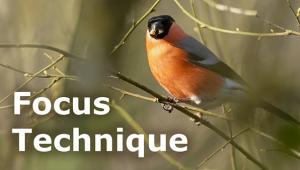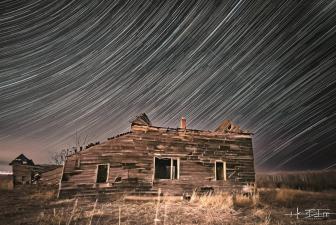Q&A Digital Photography
Help Us Out...
To aid us in making Digital Help as helpful as possible, please be specific in your query and include components, including software, that you use. David says, “Make me guess the problem and I might guess wrong.”—Editor
Upgrading And Lost Functions
Q. I just purchased a new Dell computer and upgraded to Windows 8 but I have an unexpected problem. I print with an Epson Stylus Photo R3000 and Epson has informed me that they have not produced a driver for Windows 8. A generic driver is installed but it does not allow you to select print resolution, paper stock, or any other item key to printing from Photoshop and other programs. Do you know of any company that produces a driver for this combination?
Also, new Dell printers do not have a FireWire connector and I have two items that need one, a Nikon 4000 scanner and an external hard drive. Do you know of a converter for a FireWire 6-pin to USB? Or are my options inserting a card with a FireWire connector or replacing the equipment?
If I replace the Nikon 4000 scanner do you have a recommendation for a reasonably priced scanner that would suit my needs? All of the work I do is personal. Would the disc you offer for sale in “Shutterbug” provide answers to my question?
via e-mail
A. I am saddened by the problems brought on by a so-called PC upgrade and finding that you have lost more than anything you thought you were gaining. Eventually, Epson may produce a driver for PC Windows 8…maybe…but how long you may have to wait I cannot guess. It is not likely any third-party company will produce standard drivers for your Epson R3000 except for perhaps advanced commercial systems. I am also sorry to say I have not seen a FireWire to USB converter, although some external systems built into hard drives may include such a crossover. The company I would consult on this is OWC at www.macsales.com.
There are good drivers for Nikon scanners made by LaserSoft that should support Windows 8. A replacement for Nikon 35mm film scanners is available from Plustek, either the OpticFilm 7600i or the newer 8200i model, both of which come with LaserSoft SilverFast scanner driver software. These scanners are available from Adorama, B&H as well as Amazon.com and other online stores.
My eBook on CD is a how-to for digital photo editing and does not include solutions to hardware/software problems that are the result of system upgrades. I only recommend Apple Mac computers for this work, which also provides the opportunity to virtually run older Windows operating systems with Parallels software, so I have avoided all the problems you are experiencing by running small, inexpensive Apple Mac mini computers in my lab.
If you had asked me about PC Windows 8 before purchasing, then I would have warned you of the problems you are now experiencing. Much of this I have covered in my blog at http://fotografx.blogspot.com.
No Shortcuts
Q. I am fairly new in the transition from film to digital. I would like to know the best formats for workflow. I shoot Raw with a Canon EOS Rebel T2i, crop and make minor color, brightness, and contrast adjustments in Canon’s Digital Photo Professional (DPP), then convert to either TIFF or JPEG. I then use Elements 12 for processing, adjustments, etc. I keep the file in Photoshop’s PSD format until I’m sure I’m done with it and then convert (again) to JPEG. I usually print from Elements. As another wrinkle, I’ve just started exploring HDR with Photomatix, for which I use either the JPEG or TIFF image converted from DPP.
My question: should I convert images from Raw to TIFF (which results in very large files) or use low compression JPEG? Should I just keep the images in PSD forever, or archive to JPEG or TIFF? I know that every conversion to or from JPEG degrades the image, but to what extent? Storage is not (yet) an issue, since I have a 2TB drive for archiving. (Yes, I back it up regularly.) All of my work is on Windows computers.
Richard Cochrane
Clarks Summit, PA
A. To answer your question about formats, if you are asking which image-editing software works best, there are enough options that it would take a book to describe them all. Essentially, there is the first step of conversion from a camera file into a standard image file, which you do with Canon’s Digital Photo Professional, and for that conversion you cannot do better in quality than using the native software of the company that manufactured your camera.
Once the conversion is done, there are two questions that must be answered about editing the image file. First, what do you want to accomplish with editing, and second, how much knowledge and skill do you have with image editing? You mention using Adobe Elements, which is usually chosen because people think it is easy and cheap. But easy and cheap have their own price affecting image quality. Because Elements does not support high 16-bit processing, the image information available is reduced and partially eliminated. This loss is also added to by converting to the lossy compression of JPEG, including very often conversion to the sRGB color space.
Another inexpensive image-editing software that does not require reducing bit depth from 16-bit to 8-bit and
sRGB color space is the Corel PaintShop Pro X6 software (www.corel.com). If you have limited experience and skills in image editing and want adjustment automatically to a premium-quality level there is Organic Imaging Version
2.0 (www.organicimaging.com). This software is free and then, after 250 images, you only pay approximately 10
cents per image for processing. If you want the most advanced and comprehensive top-quality image-editing control you can choose LaserSoft SilverFast HDR software (www.silverfast.com).
In respect to image quality, you get as much out of it as you put into it; nothing good comes free and easy.
Large Format Print Scanners
Q. I have been looking for a high-end print scanner. The Epson 750 and the 10000XL seem to be the top contenders. A few people said that the 750 is a more modern scanner. However, I noticed that it has been out for over eight years. Now Epson has come out with the 11000. What would you recommend?
Ray
Via e-mail
A. Large format print scanners are not products most photo enthusiasts have an interest in, so I have not tested or reported on any. They are usually used by commercial service labs, so they are your best source of information. But Epson scanners, particularly the high-end models, are in good repute for performance and service. So don’t expect much on the used market usually, unless it is sold as part of the goods offered by a company that has gone out of business. Sorry I can’t help with anything other than secondhand information, but you usually can’t go wrong with a new Epson scanner.
Pro Graphics Displays
Q. First, I would like to thank you for all the education you have provided concerning color management. My question is about screen brightness. Since we know that a brightness value of 80 to 90 CD/m2 is necessary to match paper white and to achieve a good screen to print match, how do we know which monitors are capable of those low settings? I don’t feel that I need a wide gamut monitor for my work and there are many IPS monitors available that cover 100 percent sRGB. While searching the Internet, I’ve discovered that manufacturers only list a monitor’s brightest CD/m2 capability, not its least. Is that data available anywhere else?
Houston George
via e-mail
A. Unfortunately, we are limited to the display specifications that the manufacturers supply in their marketing releases on their websites. There are literally thousands of consumer sRGB displays included in that list, and as far as I have been able to discover there are no sites that provide complete, objective specifications for all of them.
For Shutterbug, I only concern myself with professional graphics displays that provide color depth ranges of close to 100 percent of Adobe RGB. The reason for that is sRGB only reproduces about 65 percent of the color depth that all of the more advanced D-SLR and similar camera designs capture, which is close to or exceeds the Adobe RGB color depth range. So, I don’t recommend sRGB displays for photographers for viewing and editing photographic images. And all that I test must have a brightness adjustment that will adjust down to 80 to 90 CD/m2; and that is established by trial and error testing in my lab.
Sorry to say we serious photographers are a very small segment of the computer marketplace. So, it is on our shoulders to winnow out and identify the few displays that do meet our requirements. I am sorry to disappoint you, but out of self-protection and the fact I cannot cover all of the sRGB displays available in the consumer market, I can only recommend just those few that meet professional graphics standards.
Plug-Ins For Green Screen?
Q. I have seen many advertisements for green screen backgrounds, but have never seen a portrait with such a green background. When is it useful, and how is it used? What plug-in software would you recommend for replacing the green background by a different one? I just got Adobe Photoshop CS6, so the plug-in should be compatible with CS6.
Cris
Via e-mail
A. Green screen backgrounds are for a special effect of selecting and replacing the background of a photograph image from a selection of different background images. It uses a special sensor, usually a plug-in to an image editor like Photoshop, to select just the background accurately so another image can be pasted in.
It is a standardized green first used in movie and television production for replacing the background with special effects images. In portraiture and wedding photography it is a more efficient production method so you can use just one physical background and digitally choose from many more digital photo images on file for the background.
There is a lot of software to choose from, pages of it on Google, so take your pick: in your web browser go to www.google.com and use the search phrase “Green Screen Photoshop plug-ins,” and you will obtain details about many plug-in applications that are available.
Clearing Dupes In Transfer
Q. Your advice to Glenn Sherwood in the October, 2013, issue regarding the large numbers of duplicates transferred to his new MacBook Pro was spot on. I would suggest that the external drive then be “slimmed” using the Drive Genius (or a similar program) slimming module. That module is very effective in identifying files which duplicate one another in all respects. Once Glenn has verified the accuracy of DG’s culling process, he can choose to delete all, some, or none of the duplicates. This has worked for me as I have cloned drives in the past. Thank you for all your suggestions; I read them with great interest monthly.
Richard Riebel
via e-mail
A. Thank you for suggesting the software Drive Genius as an easy way to process the elimination of duplicate files in reference to my answer to a reader’s problem. Drive Genius information can be acquired if you go to the following URL: www.prosofteng.com/products/drive_genius_features.php.
Announcement
I am pleased to announce the latest 4.3 edition tomy eBook Digital Darkroom Resource Cd. The CD now contains 33 chapters totaling 399 pages in Adobe Acrobat .PDF format, providing easy-to-read text and large high-quality illustration. The CD is available for $20 plus $5 shipping and handling (US Mail if available). Ordering is as simple as sending a check or money order for $25 made out to me, David B. Brooks, and mailed to PO Box 2830, Lompoc, CA 93438.
- Log in or register to post comments


































